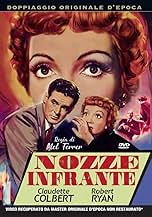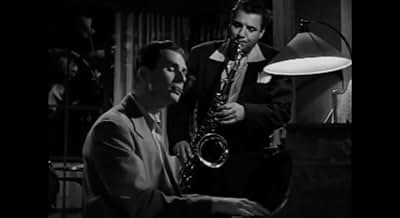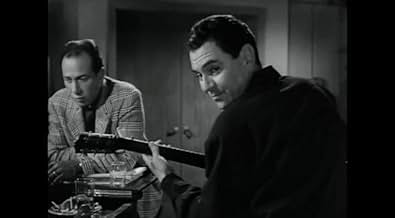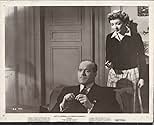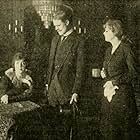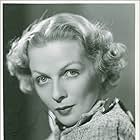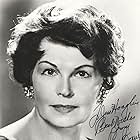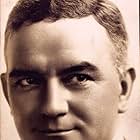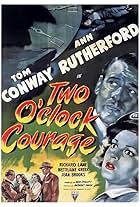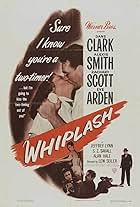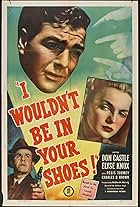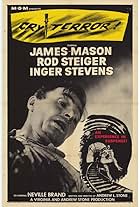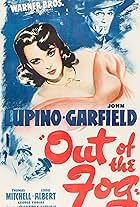IMDb RATING
6.6/10
1.3K
YOUR RATING
A woman preparing to marry her fiance is accused of bigamy by a stranger but she fights back by trying to prove she's the victim of a conspiracy designed to discredit her.A woman preparing to marry her fiance is accused of bigamy by a stranger but she fights back by trying to prove she's the victim of a conspiracy designed to discredit her.A woman preparing to marry her fiance is accused of bigamy by a stranger but she fights back by trying to prove she's the victim of a conspiracy designed to discredit her.
Edit Angold
- Flora
- (uncredited)
Pat Barton
- Louise
- (uncredited)
Vangie Beilby
- Patient
- (uncredited)
June Benbow
- Patient
- (uncredited)
Edward Biby
- Wedding Guest
- (uncredited)
Gail Bonney
- Nurse
- (uncredited)
Hazel Boyne
- Patient
- (uncredited)
Chet Brandenburg
- Trial Spectator
- (uncredited)
Clifford Brooke
- The Bishop
- (uncredited)
- Director
- Writers
- All cast & crew
- Production, box office & more at IMDbPro
Storyline
Did you know
- TriviaVivian Vance (Leah) and Philip Ober (Gregory) were married. This is the only film they both appear in, but they have no scenes together.
- GoofsWhen Ellen is walking on the beach, she sees the boat upside down, leading to her misreading the name "Monsoon" on its side as "Noosnow". But in the later scene where David sees the name of the boat, now right side up, reflected in the water, the name is not simply reflected upside down but also inexplicably backward.
- Crazy creditsThe opening credits consist of a series of visiting cards placed, one at a time, on a silver salver. The credits are written in a simple yet elegant script, and give the impression of having been engraved, as visiting cards typically were when in fashion. The closing credits are displayed in the same manner, but upon a solo visiting card laying upon the salver.
- ConnectionsReferenced in Balarrasa (1951)
Featured review
Is Ellen (Colbert) losing her mind—is she already married? The trouble is what she remembers happening is not what a bunch of other people remember. So what's going on.
About half way through, the movie turns from high-key lighting into noir. But then Ellen's fiancée is the great noir icon Robert Ryan. Except here, he's basically a good guy, although those inventive opening scenes where he can't get into his own wedding prove he's a quirky sort. Colbert gets to show her acting chops by running through about every emotion in the book. And I couldn't help thinking of the previous year's The Snake Pit (1948) as I watched her breakdown.
It's a tense, riveting mystery as we try figuring out what's going on. Ellen seems so convincing, but then so does the damning evidence against her. The screenplay effectively draws the noose ever tighter around Ellen's sanity up till the end. Then the script nosedives with some ridiculous motivation that's just too implausible to fly (without giving it away). Too bad, since the movie could have excelled without this unfortunate lapse.
There's one scene that intrigued me. Hoping to unravel the mystery, Ellen and David enter what looks like a spacious, well-lit livingroom. There, what only can be described as a cutting-edge jazz ensemble is laying out the cool sounds of the time. Draped languorously across a couch is an equally cool-looking blonde. It's a highly suggestive scene, and clearly an effort at creating exotic atmosphere. But, the banal setting and the high-key lighting drain the needed visual impact. It's almost like someone (director Ferrer, the producers?) was afraid of too much "atmosphere", (contrast with the super-evocative jazz scene in the classic DOA {1950}). Thus, a potential highlight is allowed to pass by.
All in all, it's unfortunate that the fine acting, inventive touches, and genuine suspense are challenged by a key lapse in the plausibility of the screenplay. Otherwise it's an effective little thriller.
About half way through, the movie turns from high-key lighting into noir. But then Ellen's fiancée is the great noir icon Robert Ryan. Except here, he's basically a good guy, although those inventive opening scenes where he can't get into his own wedding prove he's a quirky sort. Colbert gets to show her acting chops by running through about every emotion in the book. And I couldn't help thinking of the previous year's The Snake Pit (1948) as I watched her breakdown.
It's a tense, riveting mystery as we try figuring out what's going on. Ellen seems so convincing, but then so does the damning evidence against her. The screenplay effectively draws the noose ever tighter around Ellen's sanity up till the end. Then the script nosedives with some ridiculous motivation that's just too implausible to fly (without giving it away). Too bad, since the movie could have excelled without this unfortunate lapse.
There's one scene that intrigued me. Hoping to unravel the mystery, Ellen and David enter what looks like a spacious, well-lit livingroom. There, what only can be described as a cutting-edge jazz ensemble is laying out the cool sounds of the time. Draped languorously across a couch is an equally cool-looking blonde. It's a highly suggestive scene, and clearly an effort at creating exotic atmosphere. But, the banal setting and the high-key lighting drain the needed visual impact. It's almost like someone (director Ferrer, the producers?) was afraid of too much "atmosphere", (contrast with the super-evocative jazz scene in the classic DOA {1950}). Thus, a potential highlight is allowed to pass by.
All in all, it's unfortunate that the fine acting, inventive touches, and genuine suspense are challenged by a key lapse in the plausibility of the screenplay. Otherwise it's an effective little thriller.
- dougdoepke
- Apr 24, 2010
- Permalink
- How long is The Secret Fury?Powered by Alexa
Details
- Runtime1 hour 25 minutes
- Color
- Aspect ratio
- 1.37 : 1
Contribute to this page
Suggest an edit or add missing content


